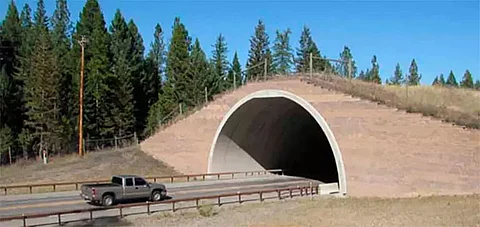
- Home
- Live Blog
- Breaking News
- Top Headlines
- Cities
- NE News
- Sentinel Media
- Sports
- Education
- Jobs

Union Minister for Road Transport and Highways Nitin Gadkari’s taking a review meeting on the progress of the four-lane Kaziranga Elevated Road project has triggered fresh hopes of a permanent solution to the problem of wildlife-vehicle collisions along the National Highway cutting through the Kaziranga-Karbi Anglong landscape. The estimated cost of the project is Rs 7,000 crore, and therefore, an adequate allocation of funds in the Union Budget will determine the pace of its execution. Besides, a smooth flow of funds and timely utilisation will be crucial to preventing cost escalation and time overruns. Gadkari suggested the inclusion of viewing platforms on the elevated road, complete with vehicle parking and kiosks, which will provide tourists with an opportunity for wildlife watching while driving along the elevated corridor. The viewing platforms will be an added attraction for tourists visiting the world heritage site. A study conducted by the Wildlife Institute of India (WII) found that 1176 wild animals of the national park, including reptiles, birds, mammals, and amphibians, were killed during the period from January to December 2019 in wildlife-vehicle collisions along NH 715 (previously NH 37). The WII also found that annual monsoon floods in the national park caused by the river Brahmaputra were the main factor influencing large mammal mortality in wildlife-vehicle collisions. Enforcement of speed limits will remain the most effective measure to prevent such collisions and protect wildlife from vehicle hits until the elevated road and tunnels are constructed and commissioned. The existing NH-715 (former NH-37) running adjacent to the proposed elevated road will be decommissioned on completion of the proposed project. When the grasslands of the national park get submerged by flood water, the animals cross the existing national highway to migrate to Karbi-Anglong hills for food and shelter. The rising number of vehicles plying on the national highway poses a barrier to the safe movement of wild animals and often leads to wildlife-vehicle collisions. Decommissioning of the existing highway after commissioning of the elevated road will remove this barrier and ensure safe movement along the animal corridors. The highway has also fragmented the Kaziranga-Karbi Anglong landscape, and decommissioning it will ensure a near-natural, contiguous landscape for migrating animals. Seamless movement of vehicles along the elevated road and the tunnels will reduce travel time for covering the 56-kilometre park stretch of NH. Due to the enforcement of speed limits for the safe migration of park animals along their corridors, more time is currently needed to cover this stretch. The proposed project will pass through nine identified animal corridors, and hence, the safety of migrating animals during construction phases will require meticulous planning and monitoring. The Expert Appraisal Committee for Environmental Clearance of the Project suggested that the project proponent explore the elevated road for the entire stretch with a minimum 10-metre vertical clearance to facilitate wildlife crossings underneath. A comprehensive assessment of the impact of seismicity on tunnel stability of the two tunnels of the elevated road project for incorporation in the Environment Impact Assessment as recommended by the EAC is vital for the safety of travellers. The committee also underscores the need for the development of a detailed muck and dredge material disposal plan, including the identification of specific earmarked locations, as provided in the Environment Impact Assessment and Environment Management Plan. Treating the construction of the tunnels as a separate project, Gadkari suggested, will facilitate using debris and muck resulting from the construction of the tunnels in the road works, but strict monitoring will be required to ensure that muck and debris disposal is carried out smoothly without affecting the landscape or causing any obstruction to the smooth movement of vehicles. Another key recommendation made by the EAC is that the alignment of roads should be such that the cutting of trees is kept to a bare minimum and that cutting old, large, and heritage trees is avoided. The committee also prohibits the felling of all trees with heronry (breeding ground for herons), pelicanry, or community nesting of birds like Painted Storks, Ibis, Egrets, and Pelicans, and insists that in the presence of such trees, alignment will be required to be changed to save such trees. It will be the duty of the park authorities to ensure that EAC recommendations are strictly adhered to during construction of the elevated road. A comprehensive study on the likely impact of the project on the livelihood of the local people will be crucial to articulate proper intervention to allay their apprehension that they would lose their livelihood after the construction of the elevated road as vehicles will not be required to stop while passing through the Kaziranga stretch. Winning the trust and confidence of local residents along the project alignment is necessary for smooth execution. The greater challenge, however, lies in executing the project with minimal disturbance to park animals. Expeditious construction of the elevated road and the tunnels will go a long way in conserving Kaziranga animals.